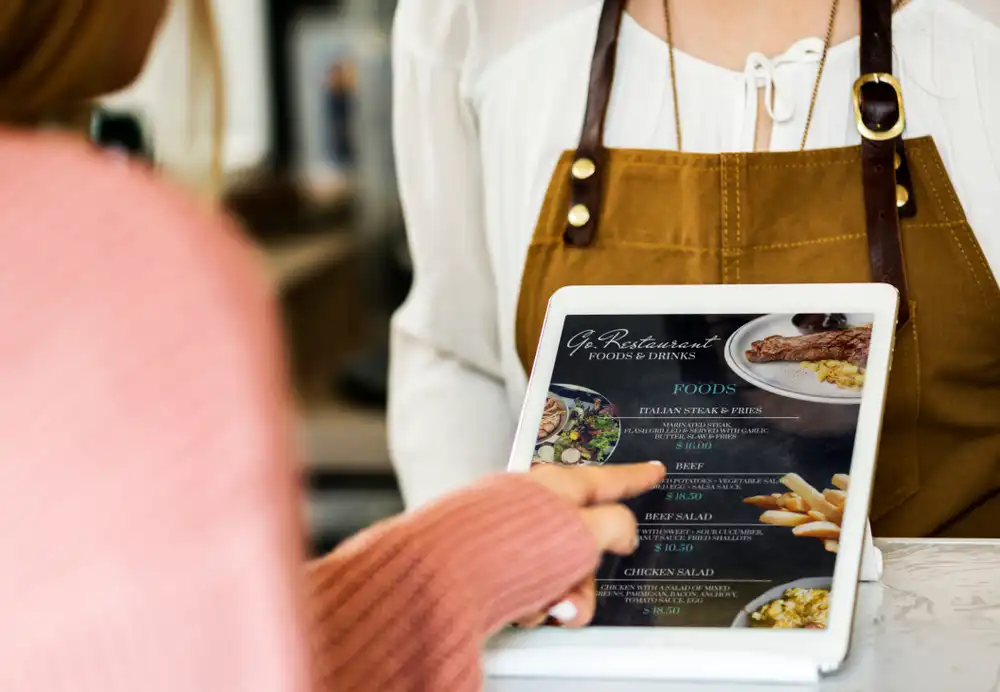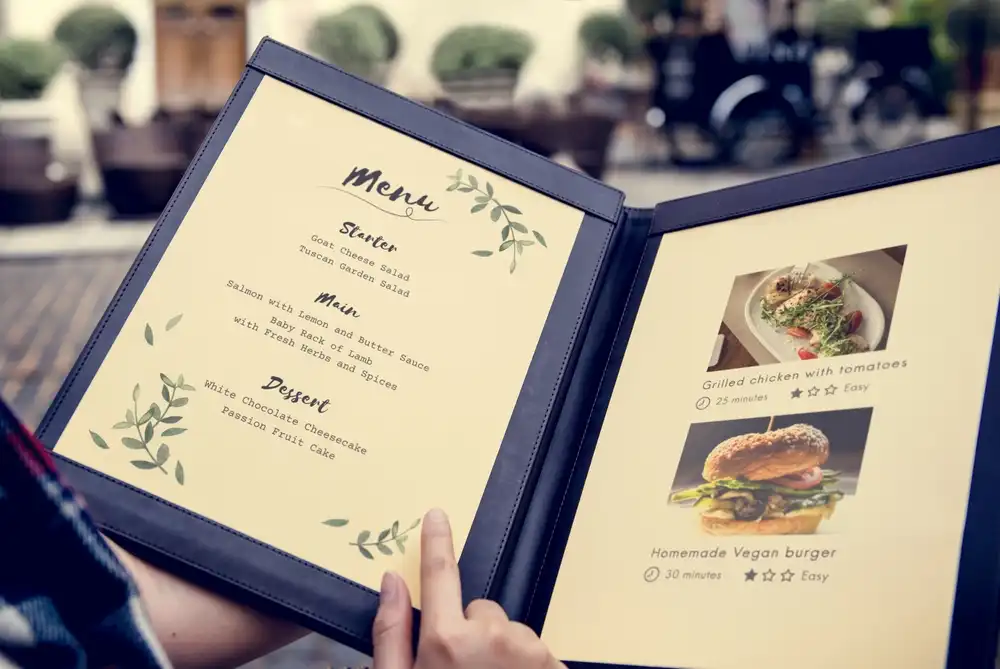Menu Engineering Strategies: Maximize Your Restaurant Profits
What is menu engineering? In this article, we will explore the concept of menu engineering and how it can help you maximize your restaurant profits. We will discuss the key principles of menu engineering, including profitability vs. popularity, the four menu categories, food costs and profit margins, the psychology of menu design, efficiency in the kitchen, and continuous optimization.
Syed Asad
loading...

Your restaurant menu is a great marketing tool. Every word and price affects what customers will order and how much they will pay. But is your menu helping you make money, or is it holding you back?
Many owners concentrate on food recipes and restaurant ambiance but neglect the strategic aspect of menu planning. They make the incorrect assumption that good food guarantees the rest.
Most customers take less than two minutes to scan through a menu. If the most profitable dishes are hard to find, they might not get ordered at all. Furthermore, 80% of restaurant sales comprise just 16% of the menu items. Do you know which dishes actually make you money?
This is where menu engineering comes into play.
Menu engineering is a structured approach to planning a menu that maximizes appeal and profitability. It uses data, psychology, and smart design choices to lead customers unwittingly into decision making.
Menu engineering is not meant to deceive customers, but rather to help them discover their best dining options while ensuring you remain profitable.
In the following section, we will outline how to implement menu engineering in your restaurant.
Key Principles to Understand Before Performing Menu Engineering
Menu engineering is about using numbers to see what is popular and what makes money. It is not about changing prices or making the menu look nice.

1. Profitability vs. Popularity: Understanding the Core Metrics
There are two main things to look at when making your menu. These are how popular the dish is and how much money it makes.
The profit from a dish is the money made after deducting food costs, labor, and other expenses. Some dishes can have high production costs regardless of their selling price.
The popularity of a dish is how often people order it. Some items are always ordered, while others hardly sell at all.
Your menu should have dishes that are both profitable and popular. You need to look at your sales data to see which dishes fit into each group.
2. The Four Menu Categories: Classifying Your Dishes
There are four groups to put dishes into based on their popularity and profitability:
🌟 Stars:
These make both money and are ordered a lot. You want them to be seen on the menu to keep them selling!
🐎 Plow Horses:
They are popular but yield low profits. You might need to alter the portion sizes, ingredients, or slightly hike the prices for better margins.
🧩 Puzzles:
They generate high profits but are not popular among diners. Think about giving them new names, rebranding, or repositioning them on the menu to make them more well known.
🐶 Dogs:
They have neither sales nor profits. They occupy space on the menu and make things complicated in the kitchen. It could be time to get rid of them completely.
Classifying your menu in this manner provides insight into what is effective and what is not, hence allowing you to make decisions based on facts rather than assumptions.
3. Food Costs and Profit Margins: The Financial Foundation
The cost of each dish needs to be calculated properly. The price should be set such that you can gain adequate profit while it does not scare customers away.

Food Cost Percentage:
Divide ingredient costs by the menu price. A cost percentage of 25% to 35% is usually acceptable.
Contribution Margin:
After removing food costs from a dish price, this is what's left for profit. Focus more on dishes that yield a higher contribution margin.
If you do not accurately calculate food costs, you may not realize that some of your most popular dishes are losing you money.
4. The Psychology of Menu Design: Guiding Customer Choices
A good menu design directs customers toward dishes that yield a higher profit margin, yet they do not feel forced. These principles usually apply:
Eye-Scanning Patterns:
Customers tend to scan menus in a way that makes them see dishes in the top right corner and the first and last items listed under each category better than others. Place your most profitable dishes there.
Price Framing:
Avoid symbols for money such as $ (dollar sign) and align prices neatly in a column, as this encourages customers to consider prices more. Instead, write prices along with information about food items.
Decoy Pricing:
Presenting a costly item makes mid-range priced items look like better value; thus, it increases the chances of customers selecting them.
Use Vivid Language:
The names of dishes with great descriptions sell 27% more than those with ordinary names. Instead, say “Korean Fire-Grilled Pork with Smoky Chili Glaze” instead of “Spicy Pork.”
By following these strategies, you enhance the perception of your plates and ease your customers in opting for choices that contribute to your profits.

5. Efficiency in the Kitchen and Operational Factors
An efficient menu not only boosts sales but also facilitates kitchen functions, reduces wastage, and enhances service speed. Prior to modifying your menu, consider the following:
Is the dish complicated to prepare? While high-margin items are excellent, their long prep times and expert skills may cause delays in the kitchen.
Do ingredients appear in various dishes? Efficient menus utilize a strategy whereby ingredients are present in numerous dishes, reducing waste and aiding in effective inventory control.
Are there any cooking process bottlenecks? If a frequently ordered dish necessitates extensive frying during peak hours, it may cause slowdowns. Think about enhancing workflow by modifying prep times or cooking techniques.
Designing your menu with customer behavior and kitchen logistics in mind guarantees a balance between profitability and smooth operations at the restaurant.
6. Testing and Continuous Optimization
You must frequently test and alter your menu. A stagnant menu will not deliver results. Check the sales report for the best or worst selling dishes. Menu engineering is a continuous effort. Regular review and adjustments will lead to increased profits, happier customers, and smooth operations.
Check the sales report for the best or worst selling dishes.
Change one thing at a time to see its impact.
Gather feedback on menu items for better presentation.
Adjust the menu according to the season.
Menu adjustments enhance profits, satisfy customers, and smooth operations.

How to Test if Your Menu Changes Are Actually Working
To know if changing your menu worked is hard. A big boost in sales doesn't show it was the menu's fault. The weather could have just been great that day, or a restaurant nearby closed, and suddenly you see more customers, or the food costs have gone up, thus lowering your profits.
For real insight into your menu, ask these questions: Are your most profitable dishes now selling even more? Are customers spending more money, or have you driven them to cheaper choices?
To get the answer, track the data and evaluate what you have done.
1. Find out where you are first
Know how you are doing now. This helps to see if anything you try out works or does not. Look at numbers like these:
Sales Per Dish
How much of each item is sold in a week?
Revenue Per Customer (Check Average)
How much does a customer pay on average?
Profit Margins Per Dish
How much money do you make after costs for each item?
Table Turnover Time
Is the menu taking too long to order?
Customer Order Trends
Are people opting for lower-priced options?
Food Waste Reports
Are there ingredients wasted because dishes on the menu are slow selling?
The above data can come from your POS system, inventory reports, etc. Start tracking this as it helps you measure the effects of future menu changes.
2. Test Changes
Change only one thing at a time and see how it goes.
A/B testing is when you make one change to your menus, then compare the new sales data with the old data.
Steps to A/B Test Menu Changes:
1. Pick one menu item to change (name, price, or placement).
2. Try the new version for 4 to 6 weeks.
3. Look at the before-and-after sales data.
4. If sales go up, keep using the new version. If sales drop, try something different next time.
Example: Testing Price Increases Raise a dish's price by $2 for four weeks. Was sales volume stable? Was revenue up? Did customers complain?
If sales remain the same or drop a bit, but revenue is up, the price has worked.
If many stop ordering, the price is too high. Try again.
Example: Changing Menu Layout to Increase Sales of High-Profit Dishes A not-selling high-margin dish was moved to a prime spot, renamed, and described appealingly.
Sales data is compared after some weeks. If sales are up, the change was good. If not, another tweak is needed.
3. Track Key Performance Indicators (KPIs) for menu success.
After implementing changes, it is essential to track relevant KPIs to assess their effectiveness.

Dish-Specific KPIs
Sales Per Item:
Are certain dishes selling more?
Profit Per Dish:
Are the profitable items selling more frequently?
Average Order Value (AOV):
Are customers spending more per visit?
Menu Mix Reports:
Are diners shifting toward high-margin items?
Overall Restaurant KPIs
Total Revenue:
Did sales increase?
Gross Profit Margin:
Are you retaining more revenue after food costs?
Food Cost Percentage:
Is food cost efficiency improving?
Customer Feedback:
Are guests responding positively to the new menu structure?
These numbers provide proof of whether the menu changes are effective.
4. Monitor Customer Behavior and Feedback
Sales data may not indicate immediate menu alterations; it is vital to heed customer reactions.
Surveys & Reviews: Are customers enthusiastic about new offerings or complaining?
Server Feedback: Are guests asking about dishes? Are they confused by the layout?
Time to Order: Are customers taking longer or shorter to make decisions?
5. Keep testing and refining for long-term success.
Menu work is ongoing.
Each week, check small changes against last month’s. Look for odd drops or jumps. Fix the menu based on sales and smiles.
Keep fixing menus as long as new items sell more and make both sides happy, too.
Menu Engineering: A One-Time Fix or an Ongoing Process?
The process of making a menu better needs to be done more than once. It should be adjusted as costs, customer preferences, and market trends change over time. A menu item that has a good selling rate today may not sell well six months later due to changes in food prices, competition, or how people eat out.

How often should you review your menu?
Every three months:
Seasonal shifts, pricing adjustments, and profitability checks.
Once a year:
Major brand alignments, food trend updates, and cost changes.
As needed:
Immediate action for increased ingredient costs, deep falls in sales, or changes in customer preferences.
Key Circumstances That Need Tweaking
As ingredient prices go up, adjust pricing or ingredients.
If sales drop for some items, analyze the reasons and make adjustments.
When customers give feedback, take appropriate action based on that feedback.
By regularly improving your menu, each item remains profitable, appealing, and in line with the restaurant&apso;s goals.
How POS data and AI can help you perfect your menu strategy.
Tech makes menu fixing simple. Use POS data, AI, and tools to test dishes.
How Your POS System Helps Measure Menu Changes
A modern POS system collects real-time sales data that allows you to:
Spot Best-Sellers & Weak Dishes: Know what sells and what to ditch.
Check Item Profits: See how much each dish makes after costs.
Watch Ordering Patterns: See if pricing or placement affects choices.
Find seasonal trends: change menus based on demand.
Use tech and data to tweak the menu on the fly, boost profits, and please customers.

Pros and Cons of Implementing Menu Engineering
Implementing menu engineering can significantly impact your restaurant's profitability and operational efficiency. While it has some pros and cons, too:
Pros
Maximized Profitability: You can make more money by putting the profitable dishes on display.
Enhanced Customer Satisfaction: You can meet diners' desires by tailoring your menu according to what they want, with the help of data analysis.
Operational Efficiency: You can manage kitchen operations and inventory better in one way by using performance information to decrease items on the menu.
Increased Upselling Opportunities: You are providing the staff with more opportunities to increase sales with high-margin dishes by identifying and promoting them.
Competitive Advantage: Since the restaurant is fully in the moment about the latest trends in dining, one can place it among the highly commercialized markets to attract customers through properly arranged menus.
Cons
Time-Consuming Analysis: Gathering and analyzing sales data requires the time-consuming efforts of skilled personnel.
Potential Overemphasis on Profit: Making money is important, but fixing prices may drive away loyal customers who love particular items that should not be eliminated just because they don’t make a profit.
Some staff and customers like the old menu. They resist the new changes. This is why they are not happy.
Permits Licenses
Data decisions are good, but they limit creativity in cooking. The chefs cannot make new or seasonal dishes to attract new customers.
Final Thoughts
Menu engineering boosts profits through strategic pricing and positioning. This enhances intuition with data to cut waste and improve dining experiences.

Balance profit goals and customer expectations to avoid the loss of loyal diners and ensure easy operations. Changes should be gradual to keep menus appealing and profitable. Thoughtful implementation can help grow restaurants regardless of experience level in menu engineering.
©2025 Cocina Digital Hospitality Group, Inc. All rights reserved.
No part of this publication may be reproduced, stored in a retrieval system, or transmitted in any form or by any means, electronic, mechanical, photocopying, recording, or otherwise, without the prior written permission of the publisher.
We use cookies to enable you to use our site, understand how you use our site, and improve your overall experience.
Cookies allow us to personalize content, track which pages are most popular and least popular, and provide advertising that may be relevant to you.
Please note that cookies that are essential to the proper functioning of the site are required and cannot be disabled.
They are usually only set in response to actions made by you which amount to remembering your settings, a request for services, such as setting your privacy preferences, logging in, or filling in forms.
As such, they are the only cookies that are enabled by default.
You can set your browser to block or alert you about these cookies.
By continuing to use our site, you accept our use of cookies.